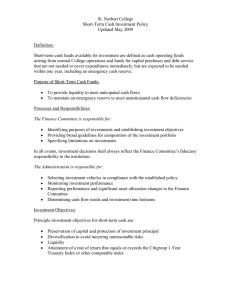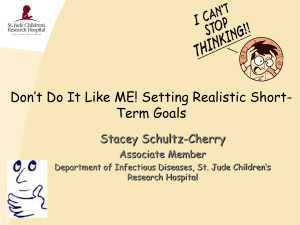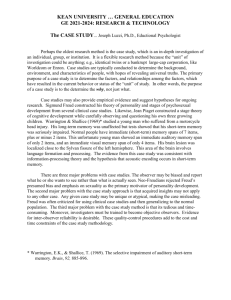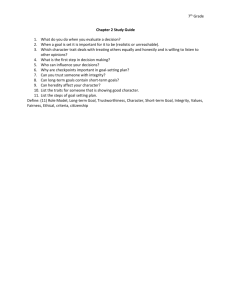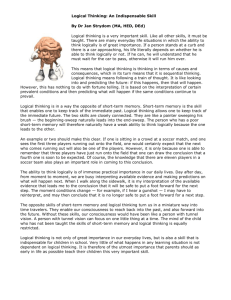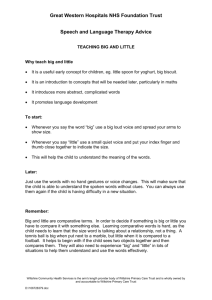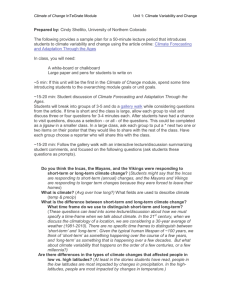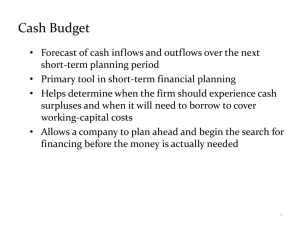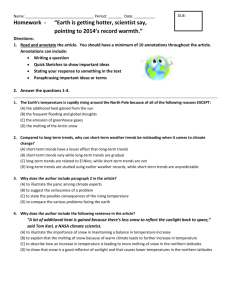Jordan University of Science and Technology Human
advertisement
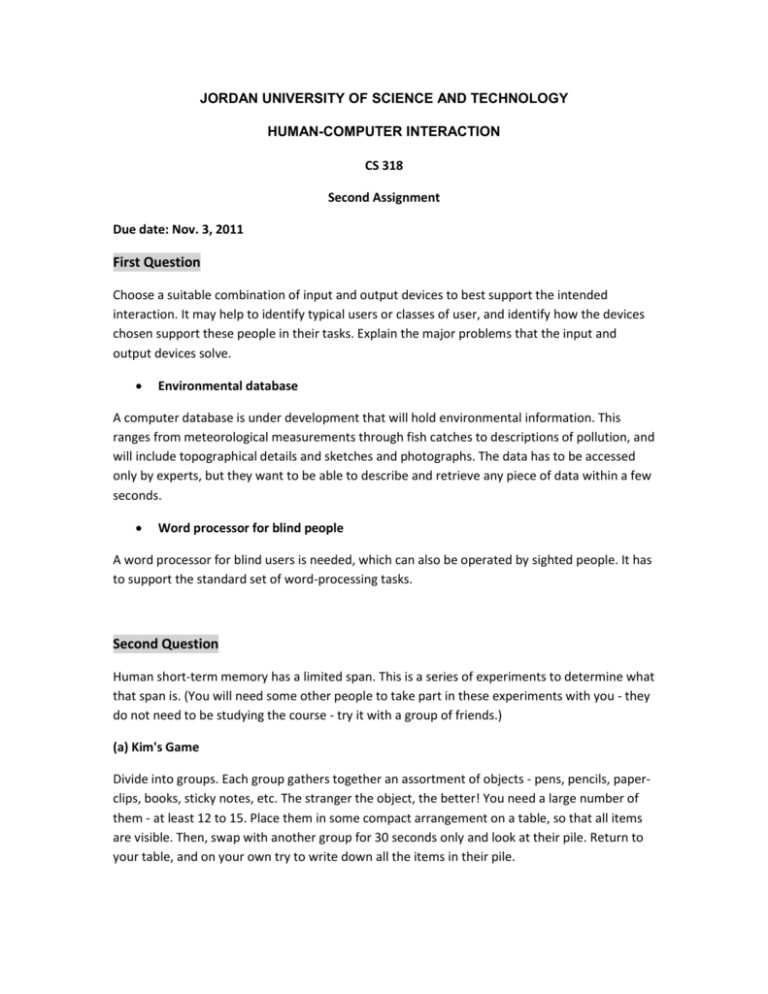
JORDAN UNIVERSITY OF SCIENCE AND TECHNOLOGY HUMAN-COMPUTER INTERACTION CS 318 Second Assignment Due date: Nov. 3, 2011 First Question Choose a suitable combination of input and output devices to best support the intended interaction. It may help to identify typical users or classes of user, and identify how the devices chosen support these people in their tasks. Explain the major problems that the input and output devices solve. Environmental database A computer database is under development that will hold environmental information. This ranges from meteorological measurements through fish catches to descriptions of pollution, and will include topographical details and sketches and photographs. The data has to be accessed only by experts, but they want to be able to describe and retrieve any piece of data within a few seconds. Word processor for blind people A word processor for blind users is needed, which can also be operated by sighted people. It has to support the standard set of word-processing tasks. Second Question Human short-term memory has a limited span. This is a series of experiments to determine what that span is. (You will need some other people to take part in these experiments with you - they do not need to be studying the course - try it with a group of friends.) (a) Kim's Game Divide into groups. Each group gathers together an assortment of objects - pens, pencils, paperclips, books, sticky notes, etc. The stranger the object, the better! You need a large number of them - at least 12 to 15. Place them in some compact arrangement on a table, so that all items are visible. Then, swap with another group for 30 seconds only and look at their pile. Return to your table, and on your own try to write down all the items in their pile. Compare your list with what they actually have in their pile. Compare the number of things you remembered with how the rest of your group did. Now think introspectively: what helped you remember certain things? Did you recognize things in their pile that you had in yours? Did that help? Do not pack the things away just yet. Calculate the average score for your group. Compare that with the averages from the other group(s). Questions: What conclusions can you draw from this experiment? What does this indicate about the capacity of short-term memory? What does it indicate that helps improve the capacity of short-term memory? (b) "I went to market..." In your group, one person starts off with "I went to market and I bought a fish" (or some other produce, or whatever!). The next person continues "I went to market and I bought a fish and I bought a bread roll as well". The process continues, with each person adding some item to the list each time. Keep going around the group until you cannot remember the list accurately. Make a note of the first time someone gets it wrong, and then record the number of items that you can successfully remember. Some of you will find it hard to remember more than a few, others will fare much better. Do this a few more times with different lists, and then calculate your average score, and your group's average score. Questions: What does this tell you about short-term memory? What do you do that helps you remember? What do you estimate is the typical capacity of human short-term memory? Is this a good test for short-term memory? Third Question Individually find as many different examples as you can of physical controls and displays (not discussed in the class). (a) List them (b) Try to group them, or classify them. (c) Discuss whether you believe the control or display is suitable for its purpose.

